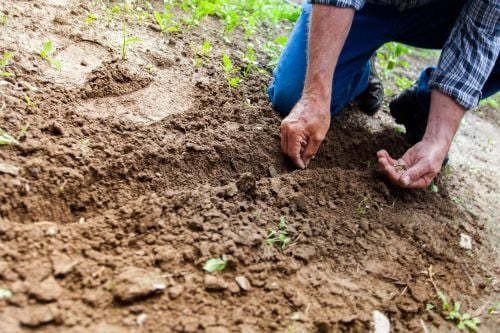No Dig Gardening - What Is It and How Do You Get Started

No Dig Gardening - What Is It and How Do You Get Started?
Gardening is a beloved pastime for many, providing a chance to connect with nature and enjoy the outdoors. However, traditional gardening methods can be time-consuming and labour-intensive, involving tilling and digging up soil. No dig gardening is an alternative method that can be easier on both the gardener and the environment. In this guide, we'll explore what no dig gardening is and how you can get started.
No dig gardening is a method of gardening where the soil is not turned over or disturbed. Instead, garden beds are created by layering organic materials on top of the existing soil. This method allows for the natural biology of the soil to remain intact, promoting healthy plant growth and reducing the need for chemical fertilisers and pesticides.
One of the main benefits of no dig gardening is that it requires less physical labour. Traditional gardening methods can be hard on the body, especially for those who are older or have physical limitations. No dig gardening eliminates the need for tilling and digging, making it a great option for those who want to garden but are unable to do heavy physical labour.
No dig gardening also helps to improve soil health. When soil is turned over, it disrupts the natural biology of the soil, killing beneficial microorganisms and invertebrates. By leaving the soil undisturbed, the natural biology of the soil can remain intact, promoting healthy plant growth.
To get started with no dig gardening, you will first need to choose a location for your garden bed. This can be a sunny spot in your garden or an area that is currently unused. Next, you will need to gather organic materials such as leaves, grass clippings, and compost. These materials will be used to create layers on top of the existing soil.
The first layer should be a layer of newspaper or cardboard, which will help to suppress weeds and break down over time. The next layer should be a layer of green materials such as grass clippings or kitchen scraps. This layer will provide nitrogen to the soil. The final layer should be a layer of brown materials such as dry leaves or straw. This layer will provide carbon to the soil.
Once your layers are in place, you can begin planting your seeds or seedlings. You should be careful not to disturb the soil underneath the layers, as this can disrupt the natural biology of the soil. Instead, simply create small holes in the layers for your plants.
As your plants grow, you can continue to add organic materials to the surface of the soil. This will help to suppress weeds and provide nutrients to the soil. You can also add a mulch layer on top of the soil to help retain moisture and suppress weeds.
In conclusion, no dig gardening is a great option for those who want to garden but are unable to do heavy physical labour. It also helps to improve soil health and promote healthy plant growth. By layering organic materials on top of the existing soil, you can create a garden bed that requires less maintenance and promotes biodiversity. So why wait? Get started today.